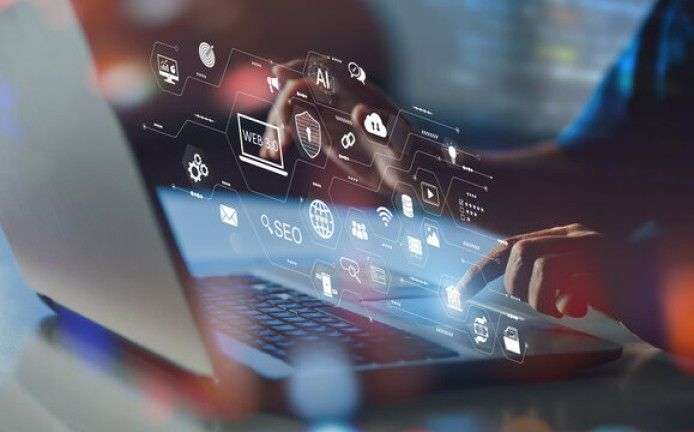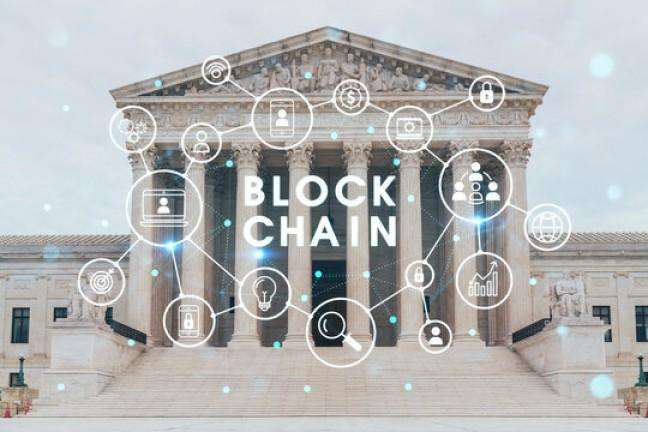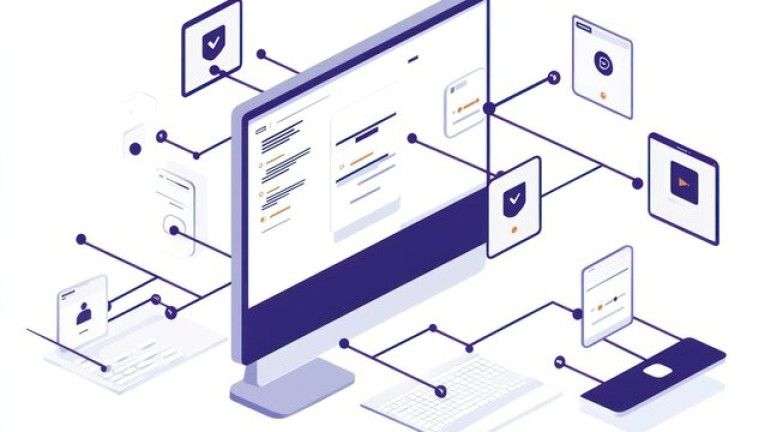In the ever-evolving landscape of technology, artificial intelligence (AI) and blockchain stand out as two of the most significant innovations of our time. Both of these technologies have the potential to redefine industries and reshape the way we live, work, and interact with one another. But what happens when these two groundbreaking fields converge? In this article, I will explore how AI and blockchain can work together, highlighting their individual strengths, the synergies between them, and the real-world applications that are beginning to emerge.
Table of Contents
Understanding AI and Blockchain
Before diving into the integration of AI and blockchain, let me first define each technology individually.
Artificial Intelligence (AI) refers to the capability of machines to perform tasks that would typically require human intelligence. These tasks can range from basic functions like recognizing speech or images to more complex ones such as decision-making and learning from experience. The core of AI is machine learning (ML), which allows systems to analyze data, identify patterns, and improve their performance over time.
On the other hand, blockchain is a decentralized digital ledger that records transactions across multiple computers in such a way that the registered transactions cannot be altered retroactively. Blockchain’s main feature is its transparency, security, and immutability. It has gained widespread recognition due to its association with cryptocurrencies, but its applications extend far beyond that.
The Synergy Between AI and Blockchain
Now that we have a clear understanding of AI and blockchain, the question arises: How can these two technologies complement each other? I believe the combination of AI and blockchain can address some of the limitations of each technology individually.
For example, AI relies on data to function effectively. However, this data is often scattered across multiple platforms and systems, making it difficult to access and trust. Blockchain, with its decentralized and immutable nature, can provide a secure, transparent, and easily accessible repository of data, ensuring that AI systems are working with accurate and trustworthy information.
Conversely, blockchain technology benefits from AI’s ability to optimize processes and improve decision-making. Blockchain networks, particularly those involved in cryptocurrency and smart contracts, often rely on consensus mechanisms and algorithms to verify transactions. By integrating AI, these processes can be made more efficient, reducing the time and resources required for validation and ensuring that the network is more resilient to attacks or failures.
Key Benefits of AI and Blockchain Integration
Let’s explore the key benefits of combining AI and blockchain, particularly in terms of their impact on industries.
1. Improved Data Integrity and Security
AI systems require high-quality data to perform effectively. If the data used for training AI models is inaccurate or tampered with, the system’s performance will be compromised. Blockchain’s immutable nature ensures that the data used by AI systems is secure, transparent, and resistant to manipulation. With blockchain, I can be confident that the data I’m using to train an AI model is authentic, providing a solid foundation for AI-driven decision-making.
2. Decentralized AI Systems
One of the challenges with traditional AI systems is that they are often centralized, meaning a single entity or organization controls the system. This creates potential risks in terms of privacy, control, and bias. By leveraging blockchain’s decentralized architecture, AI systems can be distributed across multiple nodes, making them more transparent and less susceptible to central control. This shift could lead to more equitable AI systems that are accessible to everyone.
3. Enhanced Privacy and Anonymity
Privacy concerns are a significant issue when it comes to AI. For instance, AI systems that analyze personal data often pose risks to individual privacy. Blockchain can help address these concerns by enabling secure data sharing through the use of cryptographic techniques. With blockchain, data can be anonymized and encrypted, allowing AI systems to operate while protecting individuals’ privacy. In this way, blockchain can act as a privacy-enhancing layer for AI systems.
4. Increased Efficiency
Blockchain networks often use consensus mechanisms such as proof-of-work or proof-of-stake to validate transactions. These processes, while secure, can be resource-intensive and time-consuming. AI can optimize these mechanisms by predicting the likelihood of a valid transaction and automating various decision-making processes, leading to faster and more efficient blockchain networks.
Real-World Applications of AI and Blockchain
The integration of AI and blockchain is already beginning to make waves in several industries. Let me walk you through some of the most promising applications of this combination.
1. Supply Chain Management
One of the most exciting applications of AI and blockchain is in the realm of supply chain management. Blockchain can provide transparency and traceability for products as they move through the supply chain, while AI can optimize the logistics, predict potential disruptions, and enhance decision-making. By combining these technologies, companies can create more efficient and secure supply chains. For example, I could track a product’s journey from manufacturing to delivery in real time, while AI analyzes the data to predict delays and recommend adjustments to the supply chain.
2. Healthcare
In healthcare, AI and blockchain can revolutionize the way patient data is stored and accessed. Blockchain can ensure that patient records are securely stored and easily accessible to authorized parties, while AI can help in diagnosing diseases, predicting treatment outcomes, and personalizing healthcare plans. For instance, using blockchain to securely store medical records allows AI to analyze this data and offer personalized treatments while maintaining the privacy of the patients.
3. Financial Services
The financial services industry is one of the sectors that could benefit the most from the convergence of AI and blockchain. AI can be used to detect fraudulent activities, optimize trading strategies, and enhance customer service through chatbots. Blockchain, on the other hand, can ensure the security and transparency of financial transactions. For example, AI-powered fraud detection systems can analyze blockchain transaction data in real time, identifying suspicious patterns and flagging potential fraud before it occurs.
4. Smart Contracts
Smart contracts are self-executing contracts with the terms of the agreement directly written into lines of code. AI can enhance smart contracts by automating the execution of complex contract terms based on real-time data analysis. For example, in the insurance industry, AI can help assess risk and determine whether certain conditions are met, triggering the automatic execution of a claim payment. Blockchain ensures that the contract is transparent, immutable, and tamper-proof, while AI optimizes its execution.
Challenges and Considerations
While the integration of AI and blockchain presents numerous opportunities, it’s not without its challenges. Here are some considerations to keep in mind when combining these technologies.
1. Scalability Issues
Blockchain networks, particularly those that rely on proof-of-work, can struggle with scalability. The process of validating transactions can be slow and energy-intensive. AI can help optimize blockchain networks, but the scalability issue remains a significant hurdle. For instance, if I were to deploy AI on a blockchain network with slow transaction speeds, it could undermine the system’s efficiency.
2. Complexity of Integration
Integrating AI with blockchain can be complex and requires a high level of technical expertise. The two technologies are fundamentally different in nature, and aligning them in a way that maximizes their potential benefits can be challenging. Organizations must invest in specialized knowledge and infrastructure to make this integration work seamlessly.
3. Regulatory Concerns
The convergence of AI and blockchain raises a number of regulatory questions, particularly when it comes to data privacy, security, and ethical concerns. As AI systems become more powerful and blockchain technology becomes more widely adopted, governments and regulatory bodies will need to establish frameworks to govern these technologies. Without clear regulations, there could be potential risks in terms of misuse, privacy violations, and security breaches.
Future of AI and Blockchain
Looking ahead, the integration of AI and blockchain has the potential to create more secure, efficient, and decentralized systems across various industries. As these technologies continue to evolve, I expect to see even more innovative applications emerge. We may soon find ourselves in a world where AI and blockchain work seamlessly together to solve some of the most pressing challenges facing society today.
In conclusion, while the combination of AI and blockchain is still in its early stages, the potential benefits are immense. By leveraging the strengths of both technologies, we can create systems that are more secure, transparent, and efficient. As the world becomes increasingly interconnected, the collaboration between AI and blockchain will likely play a central role in shaping the future of technology.





